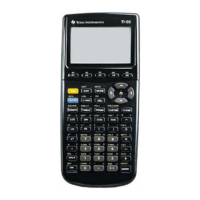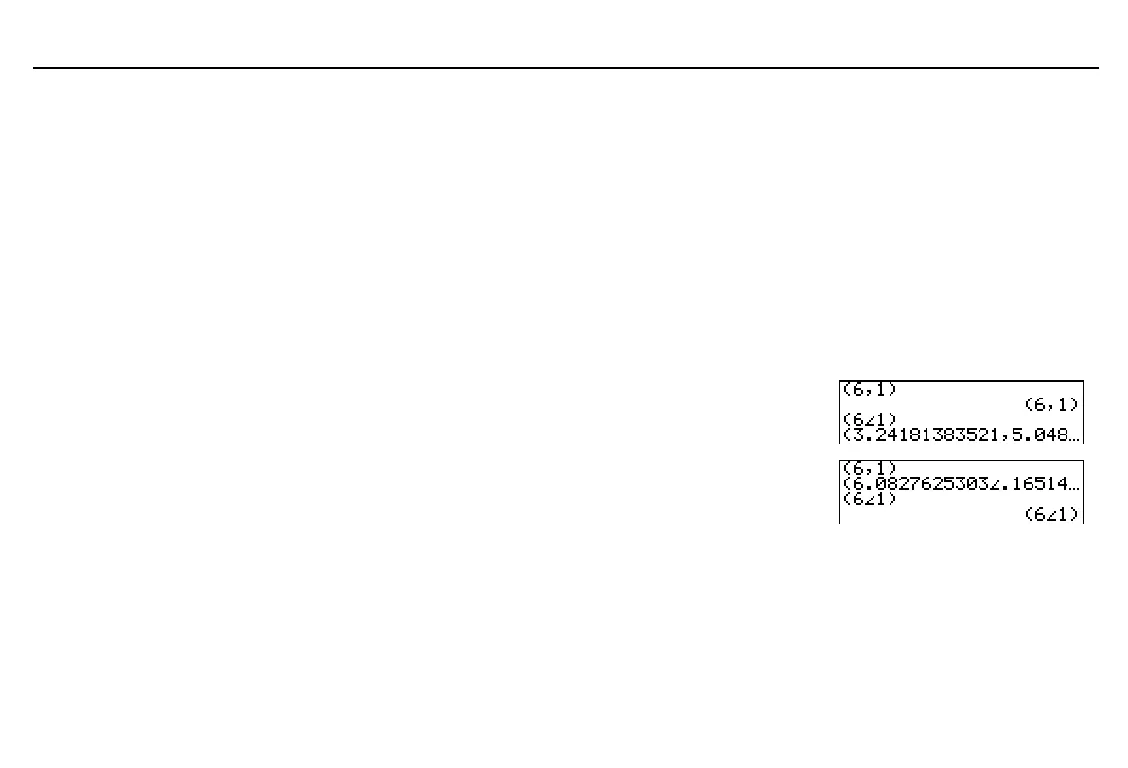70
Chapter 4: Constants, Conversions, Bases, and Complex Numbers
04CCCB.DOC TI-86, Chap 4, US English Bob Fedorisko Revised: 02/13/01 2:20 PM Printed: 02/13/01 3:01 PM Page 70 of 1604CCCB.DOC TI-86, Chap 4, US English Bob Fedorisko Revised: 02/13/01 2:20 PM Printed: 02/13/01 3:01 PM Page 70 of 1604CCCB.DOC TI-86, Chap 4, US English Bob Fedorisko Revised: 02/13/01 2:20 PM Printed: 02/13/01 3:01 PM Page 70 of 16
Using Complex Numbers
A complex number has two components: real (a) and imaginary (+b
i
). On the TI
-
86, you
enter the complex number a+b
i
as:
♦
(
real
,
imaginary
)
in rectangular form
♦
(
magnitude
±
angle
)
in polar form
You can enter a complex number in rectangular or polar form, regardless of the current
complex number mode setting. The separator (
,
or
±
) determines the form.
♦
To enter rectangular form, separate
real
and
imaginary
with a comma (
P
).
♦
To enter polar form, separate
magnitude
and
angle
with an angle symbol (
-
).
Each component (
real
,
imaginary
,
magnitude
, or
angle
) can be a real number or an
expression that evaluates to a real number; expressions are evaluated when you press
b
.
When
RectC
complex number mode is set, complex
numbers are displayed in rectangular form, regardless of
the form in which you enter them (as shown to the right).
When
PolarC
complex number mode is set, complex
numbers are displayed in polar form, regardless of the
form in which you enter them (as shown to the right).
Complex Results
Complex numbers in results, including list, matrix, and vector elements, are displayed in
the form (rectangular or polar) specified by the mode setting (Chapter 1) or by a display
conversion instruction (page 61).
♦
When
Radian
angle mode is set, results are displayed as
(
magnitude
±
angle
)
.
♦
When
Degree
angle mode is set, results are displayed as
(
real
,
imaginary
)
.
Variable names with complex
numbers stored to them are
listed on the
VARS CPLX
screen (Chapter 2).
Lists, matrices, and vectors
can have complex elements.
The graph format settings
RectGC
and
PolarGC
(Chapter 5) determine the
complex number form of
graph screen coordinates.

